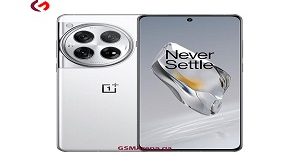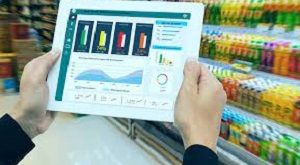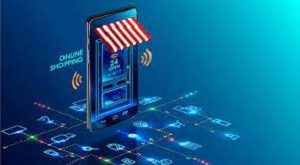Presentation
In the quickly developing scene of car innovation, one name has reliably stood apart for its advancement and obligation to pushing the limits of what’s conceivable – Tesla. Vital to Tesla’s vision for the eventual fate of transportation is the Autopilot highlight, a historic semi-independent driving framework that has caught the consideration of the auto business and the public the same. This article dives into the perplexing subtleties of Tesla Autopilot, investigating its turn of events, capacities, debates, and the more extensive ramifications it holds for the fate of independent driving.
I. The Introduction of Tesla Autopilot
A. Tesla’s Vision for Independence
Tesla’s introduction to independent driving started with a dream illustrated by Chief Elon Musk. Musk imagined a future where vehicles could explore and work themselves, lessening the dependence on human mediation for routine driving errands. This vision established the groundwork for the improvement of Tesla Autopilot, a framework intended to increase driver capacities and in the end accomplish full self-driving capacity.
B. Autopilot Equipment Suite
The equipment fundamental for Tesla Autopilot was coordinated into the vehicles, beginning with the Tesla Model S in 2014. The equipment suite included cameras, ultrasonic sensors, radar, and a strong installed PC. This variety of sensors shaped the tangible device, furnishing the vehicle with a complete perspective on its environmental factors and empowering it to settle on informed driving choices.
II. Advancement of Autopilot Capacities
A. Autopilot 1.0
The primary rendition of Tesla Autopilot, presented in 2014, denoted a huge step towards semi-independent driving. It included highlights like versatile voyage control, programmed path keeping, and the capacity to stop itself. While progressive at that point, Autopilot 1.0 was restricted in its degree, expecting drivers to keep up with consideration and be prepared to take control all of a sudden.
B. Autopilot 2.0 and Improved Autopilot
In 2016, Tesla presented Autopilot 2.0, a significant equipment and programming overhaul. This variant included further developed sensors, like extra cameras for better inclusion and overt repetitiveness. Improved Autopilot, presented close by Autopilot 2.0, brought highlights like entrance to exit ramp capacities, programmed path changes, and self-stopping. These progressions addressed a significant jump towards accomplishing full independence.
III. Full Self-Driving (FSD) Capacity
A. FSD Highlights and Beta Testing
Tesla’s Full Self-Driving (FSD) bundle, sent off in 2016, meant to give a guide to accomplishing total independence. FSD included highlights like Explore on Autopilot, which permitted the vehicle to deal with thruway entrances and exit ramps, explore through traffic, and recommend path changes. Elon Musk likewise presented “highlight total” FSD, where the product would be able to do completely independent driving, forthcoming administrative endorsement.
In 2020, Tesla started a restricted beta arrival of its Full Self-Driving programming to a select gathering of clients. This beta testing stage permitted Tesla to accumulate true information and refine the framework in view of client criticism.
B. Administrative and Wellbeing Difficulties
The presentation of FSD highlights carried Tesla into the spotlight with respect to administrative worries and wellbeing contemplations. Whether or not Tesla’s Autopilot was really fit for giving a completely independent driving experience raised banters inside the business and among administrative bodies. Security occurrences, including mishaps including Tesla vehicles working on Autopilot, prompted expanded investigation and calls for more clear rules on the utilization of independent driving highlights.
IV. AI and Brain Organizations
A. Tesla’s Way to deal with Independence
At the center of Tesla’s Autopilot is a complex utilization of AI and brain organizations. The framework constantly gains from certifiable information assembled by Tesla vehicles out and about. This methodology, known as armada learning, permits the Autopilot to further develop its dynamic capacities after some time as it experiences different driving situations.
B. Vision-Based Approach
Dissimilar to a few independent driving frameworks that intensely depend on Lidar (Light Recognition and Going) sensors, Tesla has adopted a dream based strategy. The vehicles are outfitted with numerous cameras that give a 360-degree view, and the brain networks process this visual information to decipher the climate, perceive items, and settle on driving choices. Tesla contends that this vision-driven approach is more versatile and savvy for accomplishing broad independence.
V. Debates and Reactions
A. Autopilot Abuse and Public Discernment
Tesla’s Autopilot has confronted analysis and debates, basically coming from examples of drivers abusing the innovation. Reports of drivers resting, watching films, or taking part in other diverting exercises while their Tesla was in Autopilot mode raised worries about the’s comprehension public might interpret the framework’s constraints. Pundits contend that the expression “Autopilot” itself could prompt misinterpretations about the framework’s capacities, as it doesn’t suggest completely independent driving.
B. Wellbeing Episodes and Examinations
A few mishaps including Tesla vehicles working on Autopilot have started examinations by administrative specialists. While Tesla stresses that Autopilot is intended to improve driver security when utilized appropriately, episodes where drivers depended too vigorously on the framework have incited administrative examination and calls for stricter rules.
VI. The Street Ahead: Difficulties and Future Turns of events
A. Administrative Scene
The inescapable reception of independent driving innovation faces administrative difficulties. Legislatures and administrative bodies all over the planet are wrestling with laying out clear rules and guidelines for the organization of independent vehicles on open streets. The changing ways to deal with guideline make an intricate scene that producers, including Tesla, should explore.
B. Specialized Obstacles
Accomplishing full independence requires beating specialized difficulties, for example, working on the framework’s presentation in complex metropolitan conditions, tending to edge cases, and upgrading the unwavering quality of dynamic calculations. Tesla’s iterative methodology, with standard programming refreshes, plans to handle these difficulties over the long run.
C. Industry Coordinated effort and Contest
The quest for independence has prodded coordinated effort and contest inside the auto and innovation businesses. Laid out automakers and tech monsters are putting vigorously in independent driving innovative work, fully intent on offering their own self-driving answers for sale to the public. The developing scene proposes that the race towards independence is an aggregate exertion that stretches out past individual organizations.
End
Tesla’s Autopilot addresses a momentous jump in the development of auto innovation, offering a brief look into the fate of transportation. The excursion from early emphasess to the present status of Full Self-Driving has been set apart by advancement, discussions, and progressing endeavors to reclassify the connection among people and machines out and about. As Tesla keeps on pushing the limits of independence, the effect of Autopilot innovation reaches out past the auto business, forming conversations on guideline, security, and the more extensive ramifications of a self-driving future. The street ahead is cleared with difficulties, however the commitment of more secure, more proficient transportation highlights the extraordinary capability of Tesla Autopilot in exploring the complicated convergences of innovation, society, and portability.


